Waterford sisters Hannah and Anna Meany were both nurses - and when WWI broke out, they became two of the more than 10,000 women who served in the Queen Alexandra Imperial Military Nursing Service Reserve, Britain's military nursing institution. But Hannah found herself treating both sides in the 1916 Rising before heading to the battlefields of France in WW1. Her great-nephew Paul Looby tells her story
My great-aunt, Hannah Josephine Meany was born in 1886 in Clonea near Dungarvan, County Waterford, the eldest surviving daughter of Dr Denis and Mrs Maria Meany. She was educated at the Mercy Convent, Dungarvan and the Ursuline Convent in Swansea, and was trained as a nurse at the County and City Infirmary in Waterford.
Six months after her younger sister, Anna, enlisted with the Queen Alexandra Imperial Military Nursing Service Reserve (QAIMNSR), Hannah also applied to join on December 30th, 1915. The QAIMNSR was the main military nursing institution in Britain at the time and she and Anna were among over 10,000 women who served in its ranks during the Great War.
On May 16th, 1916, Hannah reported for probationary service at the King George V Military Hospital in Arbour Hill, Dublin. Now St Bricin's Military Hospital, it had 300 beds and housed a specialist neurological unit. However, when Hannah arrived, she found it full of men wounded not in France, but on the streets of Dublin.
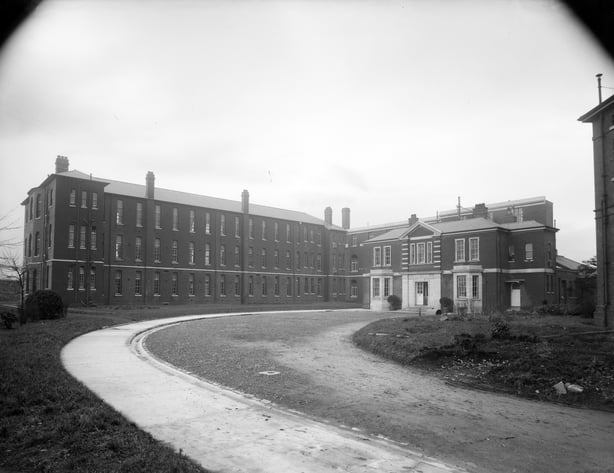
Nursing both sides in 1916
Between April 24th and 29th, 1916, the Easter Rising had shattered the centre of the city. The George V had received wounded from both sides - as illustrated by two notable patients. The first was Edward Plunket, better known as Lord Dunsany, the famed fantasy author. A captain in the Royal Inniskilling Fusiliers, he had been shot below the left eye in an ambush near the Four Courts.
The other was Cathal Brugha, second-in-command of the Irish Volunteer garrison at the South Dublin Union. Badly wounded in the fighting, he was eventually discharged from the George V as "incurable" in August 1916. As well as those injured in the Rising, the hospital was one of 70 institutions in Ireland that collectively treated 19,255 wounded evacuated from the Western Front between 1914 and 1919.
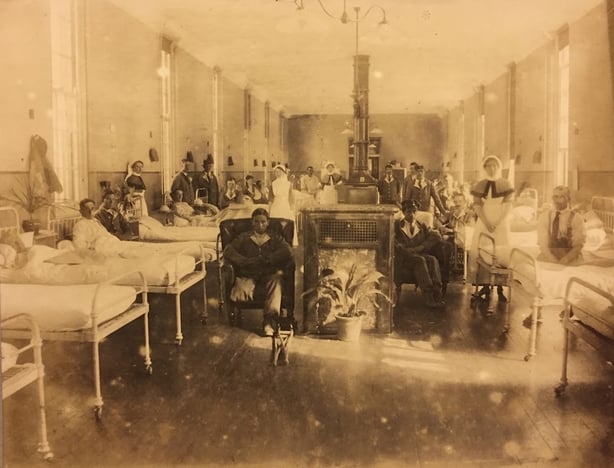
After a 17-month probation in Dublin, Hannah was posted to France on October 15th, 1917. Two days later, she reported for duty at the 11th Stationary Hospital at Rouen. The city was a major logistical and medical hub, housing five General Hospitals and five Stationary Hospitals.
Stationary hospitals started off as makeshift affairs with wards and even operating theatres set up in tents. However, as the war dragged on, the tents were gradually replaced by huts. The typical stationary hospital had between 200 and 500 beds, though some had as many as a thousand.
The base hospitals of Rouen were key destinations in the casualty evacuation chain that stretched all the way to the front-line trenches. They provided treatment that either allowed patients to return to duty or prepared them for evacuation to Britain and Ireland for long-term care. Managing patients for evacuation was a major task, since the continual stream of wounded from the front meant that beds were a precious resource. Hannah served at the 11th Stationary for nearly three months of the winter of 1917.
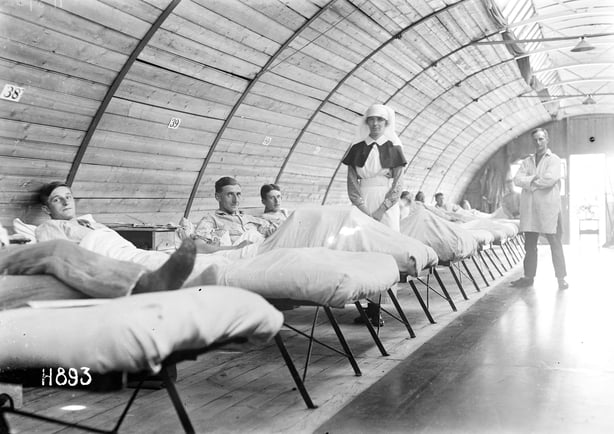
In that time, the British Expeditionary Force launched three major attacks on the Western Front: the First and Second Battles of Passchendaele and the Battle of Cambrai. 158,914 British soldiers were wounded in this period, and they flooded down the evacuation chain to the base hospitals in Rouen and elsewhere in France.
Behind the front line
After 14 days leave, Hannah reported to the 42nd Casualty Clearing Station (42 CCS) on January 31st, 1918. 42 CCS was located in the town of Aubigny-en-Artois, about 20 km behind the front-line in the Arras sector. Casualty clearing stations were field hospitals that provided life-saving treatment to wounded men arriving from the front, stabilising them enough to allow them to survive evacuation to a base hospital. In periods of active fighting, a CCS was expected to treat between 300 and 500 wounded every 24 hours and evacuate the majority.
Maintaining an uninterrupted flow of wounded to the rear was a constant challenge for the staff of a CCS.A typical CCS had a dressing hut to triage the sick and wounded as they arrived from the front. Minor cases were sent directly to an evacuation ward to await transport to a base hospital. More serious cases were sent to the preparation ward where they were made ready for surgery. Those too ill for surgery were sent to the resuscitation ward.

Here the nursing staff worked against the clock to save lives, warming men suffering from shock or exposure and giving infusions of saline or transfusions of blood - then a cutting-edge procedure. Only once a patient was stabilised could they be considered for surgery. Operations were carried out in the theatre by one or more surgical teams, who set broken bones, stanched bleeding wounds, and performed amputations to forestall gas gangrene and other infections.
Moving closer to the front
Since a wounded man’s chance of survival was far better if he was operated on as soon as possible, CCS were moved ever closer to the front, sometimes into the range of enemy artillery. Later in the war, some were bombed by German aircraft, killing and wounding patients, doctors, and nurses alike. Over 200 QAIMNSR nurses were killed in action in the Great War.
Indeed, on March 18th, 1918, the sister in charge of 42 CCS reported that "3 large bombs dropped just outside the hospital – damage done to dispensary stock, but no-one was injured." Continued German air raids forced the relocation of 42 CCS to the village of Mingoval in August 1918, during which time Hannah was temporarily transferred to the 12th Stationary Hospital in St Pol Sur Ternoise.
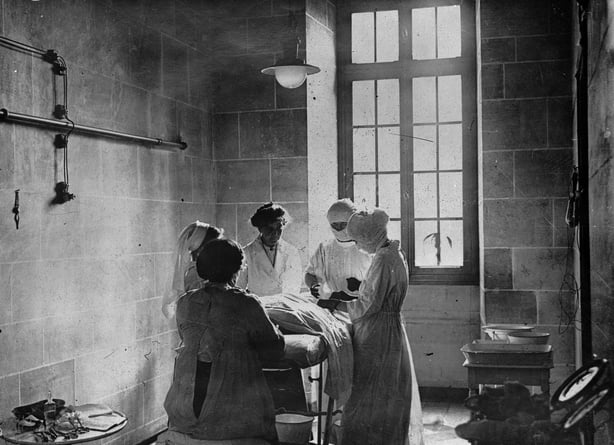
Hannah served with 42 CCS through August and September 1918, and with 33 CCS at Boisleux-St-Marc in October 1918. By this point in the war, the Germans were in full retreat with the Allies in pursuit. After four years of stalemate, the casualty clearing stations struggled to keep up with the rapid advance of the front line. On November 2nd, Hannah returned to 42 CCS, now located in the recently liberated city of Douai.
Just over a week later, the Armistice brought the bloodletting to an end. In the weeks after the ceasefire, Hannah worked between 42 CCS in Douai and the 12th Stationary in Saint Pol Sur Ternoise. She spent Christmas 1918 and New Year 1919 on leave, returning to duty on January 4th. On March 31st, 1919, Hannah was demobbed at Boulogne and crossed the Channel to Folkestone. She had served in the QAIMNSR for 2 years and 230 days.
Caught in the Troubles
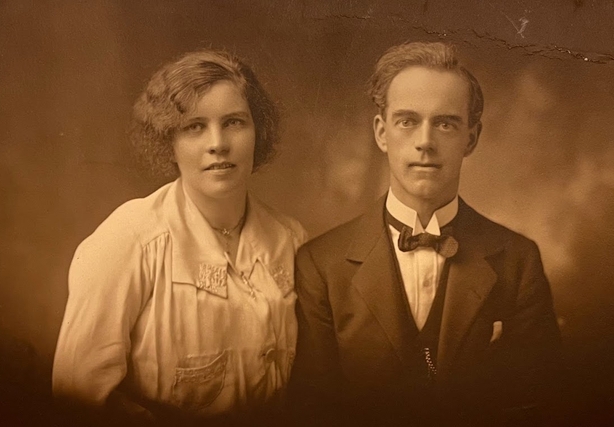
On September 29th, 1920, Hannah married Frank Woods. The couple moved to Belfast and ran Muldoon’s Bar on Corporation Street, close to the city docks. They lived over the bar and raised two daughters: May and Madeline. Hannah became a fixture at Muldoon’s. Her habit was to stand at the end of the bar talking to the regulars before retiring upstairs for the night.
At 8.30 on the evening of May 31st, 1973, Hannah had just gone up the stairs when the Ulster Freedom Fighters attacked the bar. Thomas Holmer Curry - a ship’s captain from Preston, Lancashire - was shot dead and nine staff and customers were injured, including two off-duty British soldiers. Hannah, then 87 years old, had avoided death or serious injury by minutes. She died on June 17, 1977, and is buried in Belfast.
Next week, read about the wartime experiences of Hannah's sister Anna, who found herself on a very different battlefield in WWI.
Do you have a story to tell about your own family's experience of significant historical events? Find out how to contribute it here. Have you ever seen a member of your family in a historic photograph? Explore our Civil War Ireland then and now series here, and explore our history galleries here.
The views expressed here are those of the author and do not represent or reflect the views of RTÉ










































